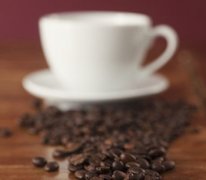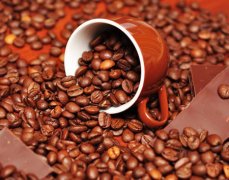Introduction to boutique coffee beans-- Kopi Luwak Kopi Luwak taste Kopi Luwak characteristics cat shit coffee

If someone asks what is the most expensive coffee in the world, and you still reply that it is Blue Mountain Coffee, then you will be lagging behind. The Blue Mountain one, which has a price reduction of $120 a kilogram this year, is obviously unable to match the price of nearly $1000 a kilogram. KopiLuwak (Kopi Luwak) is more expensive. KopiLuwak is Indonesian, kopi means coffee, and Luwak is a local weasel name, so KopiLuwak locals are used to translating it into weasel coffee. In China, because of the need for text beautification, it has become musk deer fragrant cat coffee. Popular, it is called Kopi Luwak directly, but it is also appropriate, because KopiLuwak is after Luwak swallowed the coffee pulp. Because I can't digest the coffee beans, I pulled out the whole coffee beans. The KopiLuwak of the Indonesian Pavilion at the 2010 World Expo is as high as 380 yuan for 20 grams. This year, the purchase price of Fortune Land is about 1000 US dollars per kilogram, or 6.8 yuan per gram, plus 20% missing weight when raw beans are processed into ripe beans. In addition, taking into account customs duties, freight, rent and labor, the price of the Indonesian Pavilion is very kind.
So why is KopiLuwak so expensive? There are four reasons:
1. The good quality remains the same. Because Luwak only eats coffee beans with just the right maturity, it is tantamount to picking out the best quality coffee beans in the past. 2. Special fermentation technology to cultivate special taste. 3. Luwak is not a good house cat and will poop in cat litter, so local coffee farmers need to search everywhere for these expensive poop. The output is limited, and the annual output of wild Kopi Luwak is only about 500lb (about 240kg). Things are rare, and the primary value of KopiLuwak is still its rarity at the moment.
Important Notice :
前街咖啡 FrontStreet Coffee has moved to new addredd:
FrontStreet Coffee Address: 315,Donghua East Road,GuangZhou
Tel:020 38364473
- Prev

Introduction of High-yield and High-quality Coffee beans-- Colombian Coffee beans
Colombia, a country adjacent to Brazil, is also a world-famous coffee producer, with rich landscapes, low dimensions, high elevations and doubly superior coffee cultivation compared with Brazil. Colombia has always been the second largest coffee producer in the world after Brazil at first, but in recent years it has been overtaken by Vietnam to become the third largest producer.
- Next

Fresh coffee raw beans introduce varieties of coffee beans classification of coffee beans what are fresh coffee beans
From the fruit state of coffee beans when they are picked from the tree to the state of raw beans that can be baked, the moisture content of coffee beans will be controlled between 9% and 13%, and it is not easy to bake if the water content is too high or too low. Generally, we get newly collected raw beans with water washing treatment, the moisture content is usually about 11.5% to 12.5%, half-washed Mantenin may reach 13%, and half-washed Brazil is 11% ~ 12% per day.
Related
- Detailed explanation of Jadeite planting Land in Panamanian Jadeite Manor introduction to the grading system of Jadeite competitive bidding, Red bid, Green bid and Rose Summer
- Story of Coffee planting in Brenka region of Costa Rica Stonehenge Manor anaerobic heavy honey treatment of flavor mouth
- What's on the barrel of Blue Mountain Coffee beans?
- Can American coffee also pull flowers? How to use hot American style to pull out a good-looking pattern?
- Can you make a cold extract with coffee beans? What is the right proportion for cold-extracted coffee formula?
- Indonesian PWN Gold Mandrine Coffee Origin Features Flavor How to Chong? Mandolin coffee is American.
- A brief introduction to the flavor characteristics of Brazilian yellow bourbon coffee beans
- What is the effect of different water quality on the flavor of cold-extracted coffee? What kind of water is best for brewing coffee?
- Why do you think of Rose Summer whenever you mention Panamanian coffee?
- Introduction to the characteristics of authentic blue mountain coffee bean producing areas? What is the CIB Coffee Authority in Jamaica?

